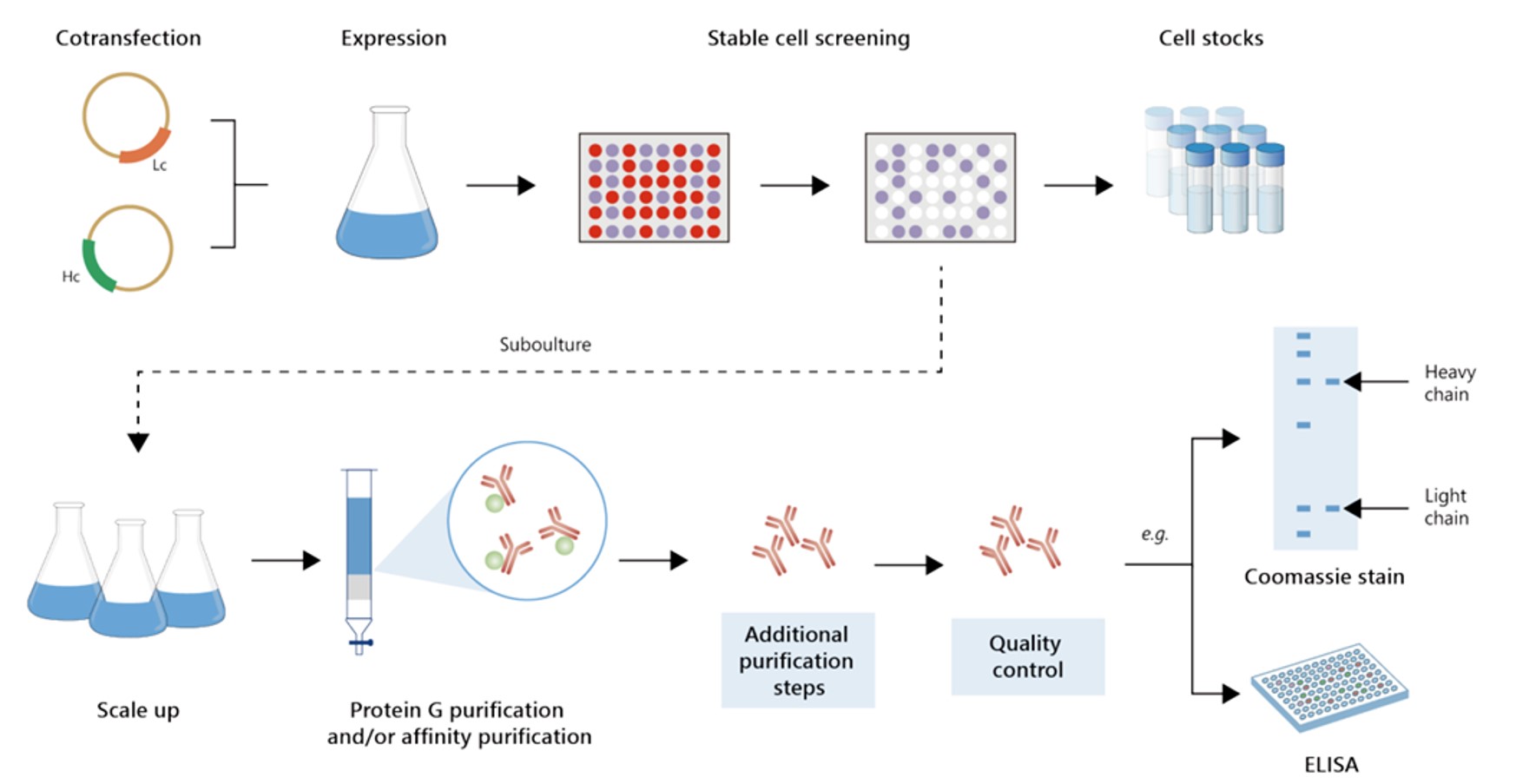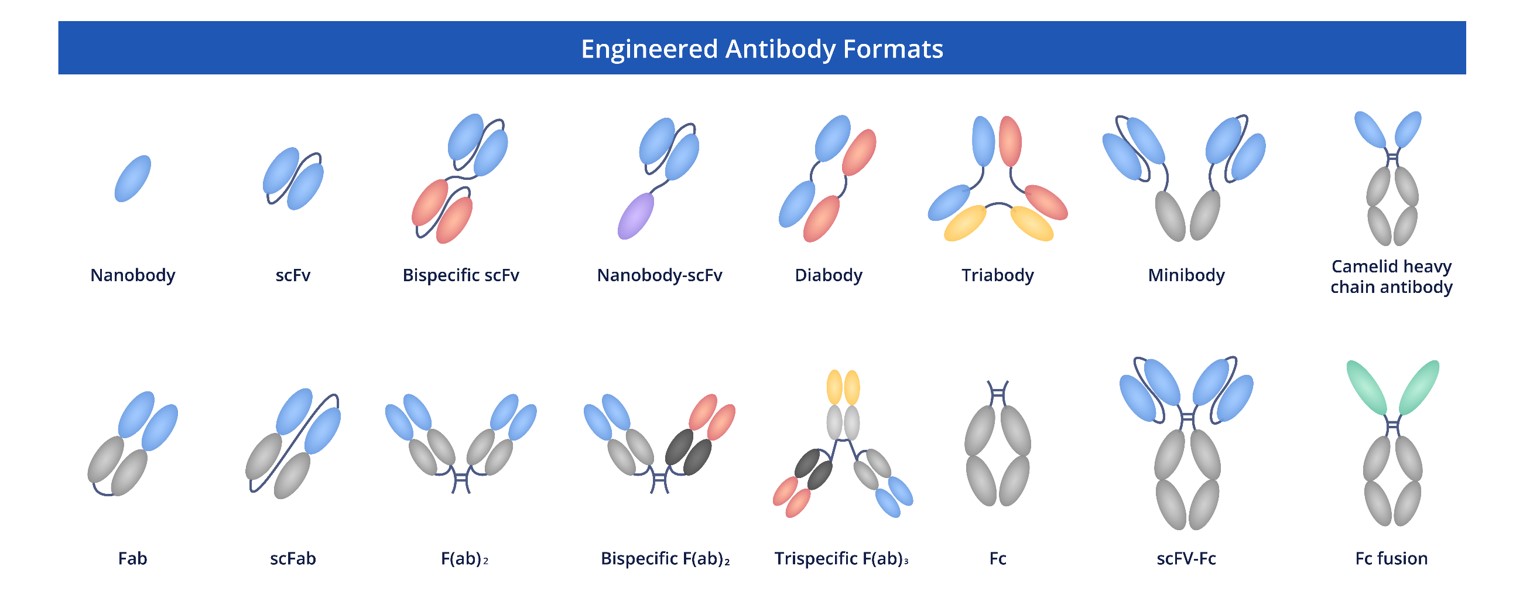 Loading...
Loading...

Anti-PLA2G6 Recombinant Antibody Products
 Loading...
Loading...Anti-PLA2G6 Products
-
- Derivation: Mouse
- Species Reactivity: Human
- Type: Mouse IgG1, κ
- Application: WB, ELISA, IF, IP
Can't find the products you're looking for? Try to filter in the left sidebar.Filter By Tag
Our customer service representatives are available 24 hours a day, from Monday to Sunday. Contact Us
For Research Use Only. Not For Clinical Use.
Creative Biolabs offers premier recombinant antibodies against PLA2G6, playing a vital role in advancing biomedical research. By leveraging cutting-edge technologies, we guarantee that our products adhere to the highest levels of quality and effectiveness. Our extensive portfolio reflects our dedication to facilitating research progress, providing reliable and valuable reagents. In addition to supplying superior antibodies, we are committed to offering exceptional technical support to guide researchers throughout their projects. Partnering with Creative Biolabs means gaining access to innovative tools and a reliable collaborator dedicated to your scientific success.
PLA2G6: A Key Player in Neurodegeneration and Metabolic Disorders
PLA2G6 plays a significant role in various disease processes, particularly those affecting the nervous system. Mutations or dysfunctions in this enzyme have been closely linked to a group of neurodegenerative disorders characterized by abnormal lipid metabolism and iron accumulation in the brain. These conditions often present with progressive motor impairments, cognitive decline, and psychiatric symptoms. The enzyme's involvement in membrane phospholipid remodeling is critical for maintaining neuronal integrity and cellular homeostasis. Disruptions can lead to impaired membrane repair, increased oxidative stress, and mitochondrial dysfunction, all of which contribute to neuronal death. Beyond neurodegeneration, emerging studies suggest a role in inflammatory pathways and cellular signaling, indicating potential implications in broader systemic diseases. Its importance in phospholipid metabolism also ties it to metabolic syndromes and conditions involving cell membrane dysregulation. Research continues to explore its function in maintaining brain health and how alterations may drive pathogenesis, offering promising avenues for targeted therapeutic interventions aimed at slowing or halting disease progression.
Alternative Names
Complement PLA2G6; 85 KDa Calcium-Independent Phospholipase A2; INAD1; PARK14; GVI PLA2; NBIA2A; IPLA2beta; GVI; 85/88 KDa Calcium-Independent Phospholipase A2; PLA2; IPLA2-Beta; CaI-PLA2; PLPLA9; Patatin-Like Phospholipase Domain-Containing Protein 9; PNPLA9; Patat
Background
Catalyzes the release of fatty acids from phospholipids. It has been implicated in normal phospholipid remodeling, nitric oxide-induced or vasopressin-induced arachidonic acid release and in leukotriene and prostaglandin production. May participate in fas mediated apoptosis and in regulating transmembrane ion flux in glucose-stimulated B-cells. Has a role in cardiolipin (CL) deacylation. Required for both speed and directionality of monocyte MCP1/CCL2-induced chemotaxis through regulation of F-actin polymerization at the pseudopods
Disease related genes, Enzymes, Human disease related genes, Metabolic proteins, Potential drug targets, RAS pathway related proteins
Intracellular, Membrane (different isoforms)
Cell type enhanced (Spermatocytes, Early spermatids)
Immune cell enhanced (NK-cell)
Cell line enhanced (HEL, HMC-1, U-266/70)
Homodimer formed by catalytic domains tightly interacting through a large hydrophobic interface. The contact area involves 3 alpha helices, several loops and a part of the beta sheet from each monomer. Both active sites of the dimer are in close proximity adopting an open conformation that provide sufficient space for phospholipid access and favoring cooperativity in deacylation-reacylation reactions. Each monomer has 9 ankyrin repeats stacked side-by-side in an elongated structure oriented outwards from the catalytic core.
Calmodulin-binding, Hydrolase
Anti-PLA2G6 rAb Products
We endeavor to expedite research and discovery by providing anti-PLA2G6 recombinant antibody products that combine supreme quality, exceptional value, and premium technical support.
| Cat. No. | Product Name | Target Species | Host Species | Applications |
| MOB-1664z | Mouse Anti-PLA2G6 Recombinant Antibody (clone 31F11) | Human | Mouse | WB; ELISA; IF; IP |
Customer Reviews

Mouse Anti-PLA2G6 Recombinant Antibody (clone 31F11) (CAT#: MOB-1664z)

Mouse Anti-PLA2G6 Recombinant Antibody (clone 31F11) (CAT#: MOB-1664z)
rAb Production
With years of accumulated expertise in recombinant antibody development and optimization, we deliver premium recombinant antibody products of exceptional quality and standards through top-tier services—all within the shortest possible timeframe.
Featured Anti-PLA2G6 Recombinant Antibody Production Platforms
Fig.1 Milligram-scale anti-PLA2G6 recombinant antibody production.
 Fig.2 Gram-scale anti-PLA2G6 recombinant antibody production.
Fig.2 Gram-scale anti-PLA2G6 recombinant antibody production.
rAb Modalities
Creative Biolabs is devoted to providing researchers with the most comprehensive and cutting-edge high-quality recombinant antibodies across multiple formats. Our expertise in recombinant antibodies spans a diverse range of engineering methodologies, and our products are supported by exceptional custom engineering services designed to meet your specific requirements.
 Fig.3 Full Length Anti-PLA2G6 Recombinant Antibody Production and Modalities.
Fig.3 Full Length Anti-PLA2G6 Recombinant Antibody Production and Modalities.
If you need more details about PLA2G6, please don't hesitate to contact us by phone or email. Our expert team is always ready to help with any questions or difficulties you may encounter during your research, providing the support necessary to ensure your experiments proceed smoothly.

